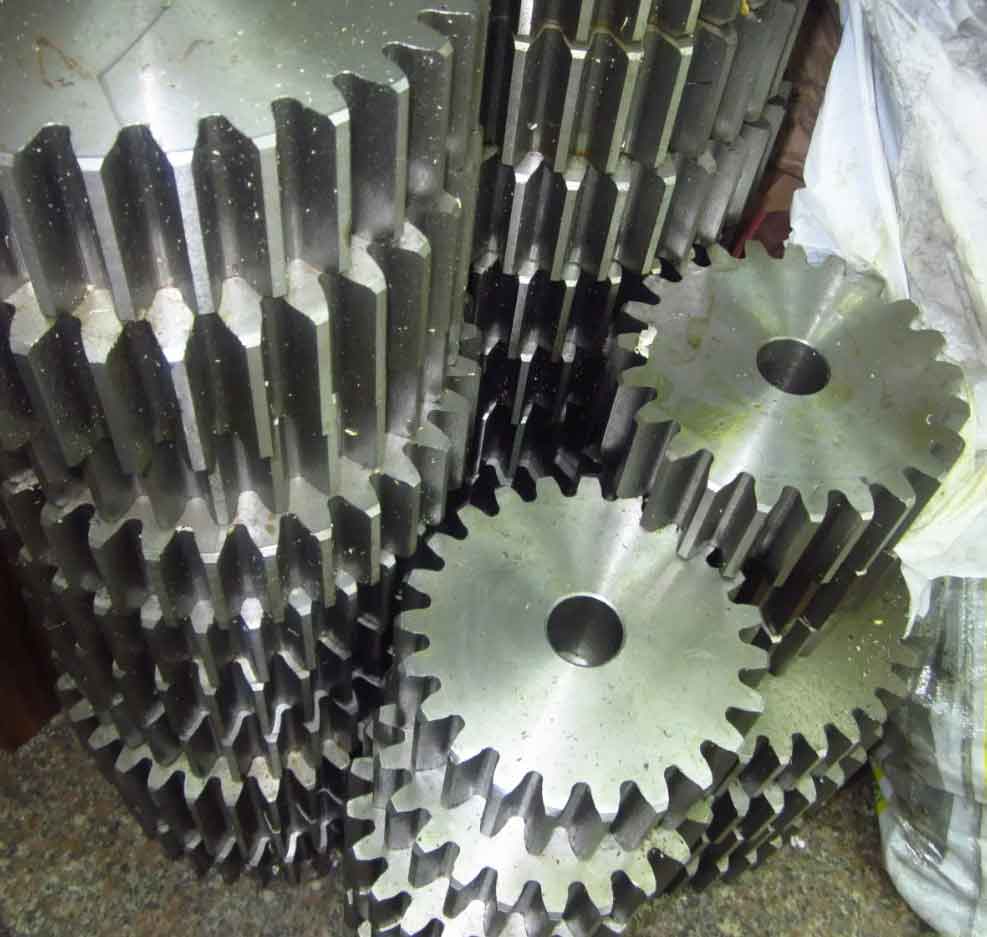Spur gear is fundamental components in heavy machinery, responsible for transmitting power and motion between shafts. Their performance and longevity are critical to the overall efficiency and reliability of machinery. One of the key factors influencing the durability of spur gear is the application of surface treatments. These treatments can significantly enhance the wear resistance, fatigue strength, and overall lifespan of spur gear. This article explores various surface treatments used in spur gear, their benefits, and their impact on extending gear life in heavy machinery.

Introduction
Spur gear is characterized by their straight teeth and are commonly used in various heavy machinery applications, including construction equipment, agricultural machinery, and industrial drives. Due to the high loads and harsh operating conditions they endure, spur gear is prone to wear, pitting, and other forms of surface degradation. Surface treatments play a crucial role in mitigating these issues by improving the surface properties of spur gear.
Types of Surface Treatments
- Carburizing
- Nitriding
- Induction Hardening
- Shot Peening
- Coating Technologies
Carburizing
Carburizing is a heat treatment process that introduces carbon into the surface layer of a steel gear. The process involves heating spur gear in a carbon-rich environment, which results in a hardened surface layer while maintaining a tough core. This enhances wear resistance and fatigue strength.
Nitriding
Nitriding is a thermochemical treatment that diffuses nitrogen into the surface of spur gear, forming a hard, wear-resistant layer. This process is carried out at lower temperatures compared to carburizing, resulting in minimal distortion and high surface hardness.
Induction Hardening
Induction hardening involves heating spur gear surface using an induction coil and then rapidly cooling it. This process creates a hardened surface layer with a tough core, improving wear resistance and load-bearing capacity.
Shot Peening
Shot peening is a mechanical process that bombards spur gear surface with small spherical media. This introduces compressive residual stresses, enhancing fatigue strength and resistance to surface cracks.
Coating Technologies
Advanced coating technologies, such as physical vapor deposition (PVD) and chemical vapor deposition (CVD), apply thin, hard coatings to spur gear surface. These coatings, including diamond-like carbon (DLC) and titanium nitride (TiN), provide excellent wear resistance and reduce friction.
Benefits of Surface Treatments
- Increased Wear Resistance: Surface treatments create hard layers that resist abrasive wear, extending gear life.
- Improved Fatigue Strength: Treatments like shot peening introduce beneficial residual stresses, reducing the likelihood of fatigue failure.
- Enhanced Corrosion Resistance: Some coatings provide a barrier against corrosive environments, protecting spur gear material.
- Reduced Friction: Coatings and treatments can lower friction between gear teeth, improving efficiency and reducing heat generation.
Comparative Analysis of Surface Treatments
| Treatment Type | Wear Resistance | Fatigue Strength | Distortion | Cost |
|---|---|---|---|---|
| Carburizing | High | High | Moderate | Medium |
| Nitriding | Very High | Moderate | Low | Medium |
| Induction Hardening | High | High | Moderate | Low |
| Shot Peening | Moderate | Very High | None | Low |
| Coating Technologies | Very High | High | None | High |
Case Study: Application in Heavy Machinery
A study conducted on spur gear used in mining equipment revealed that carburized gears exhibited a 30% increase in lifespan compared to untreated gears. The combination of high wear resistance and improved fatigue strength allowed spur gear to withstand harsh operating conditions without significant degradation.
Conclusion
Surface treatments play a pivotal role in enhancing the performance and longevity of spur gear in heavy machinery. By selecting the appropriate treatment based on the specific application requirements, it is possible to significantly reduce maintenance costs, increase operational efficiency, and extend the service life of spur gear. Future advancements in surface treatment technologies will likely offer even greater improvements, ensuring the reliability and durability of heavy machinery for years to come.
